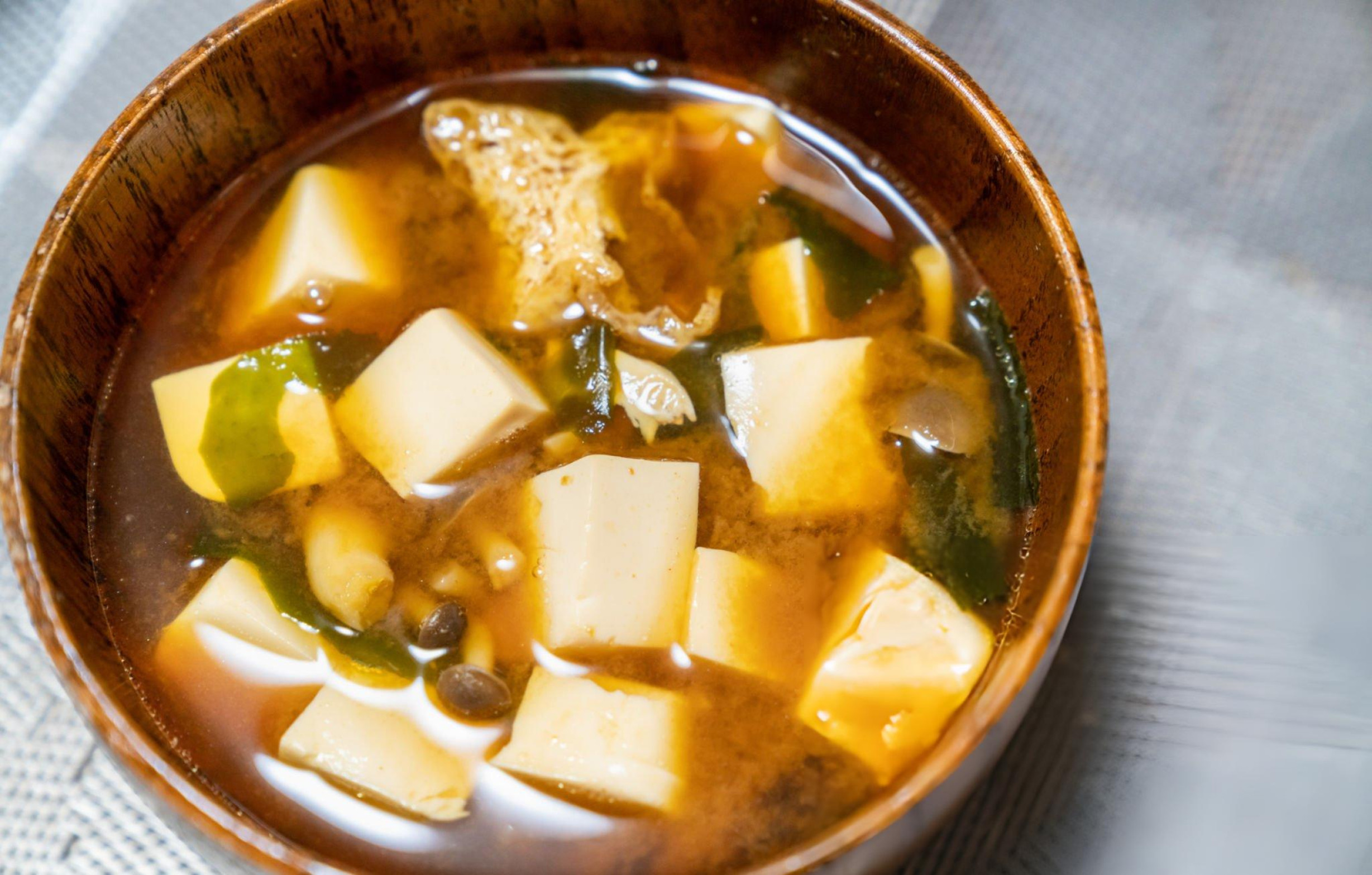
Miso Soup Recipe
Experience the comforting warmth and rich umami flavors of miso soup, a timeless Japanese classic perfect for any meal of the day.
Print
Pin
Servings: 4
Ingredients
For the Dashi (makes a scant 4 cups)
- 1 cup katsuobushi dried bonito flakes, packed (or loosely packed 3 cups for stronger flavor)
- 4 cups water
- 1 piece kombu dried kelp, ⅓ oz (10 g per piece; approximately 4 x 4 inches or 10 x 10 cm)
For the Miso Soup
- 4 Tbsp miso 1 Tbsp, 18 g for every 1 cup, 240 ml of dashi
- 7 oz soft/silken tofu kinugoshi dofu
- 1 Tbsp dried wakame seaweed
- 1 green onion/scallion
Instructions
- This recipe utilizes Awase Dashi, prepared with kombu and katsuobushi. For vegan or vegetarian options, kombu dashi or vegan dashi made with kombu and dried shiitake mushrooms can be used.
- Add 4 cups of water and a piece of kombu to a medium-sized saucepan. If time permits, soak the kombu in water for 30 minutes to enhance the umami extraction. Never rinse kombu or remove the white powdery layer, as this is a natural source of umami. Ensure the kombu is free from visible dirt particles.
- Heat the water slowly over medium-low heat, taking about 10 minutes to bring it to a near boil. This gradual process maximizes umami extraction. Remove the kombu just before the water begins to boil to avoid a slimy texture or bitterness.
- For non-vegan/vegetarian preparation, add 1 cup of katsuobushi to the kombu-infused dashi. Bring the mixture back to a boil, then reduce the heat and let it simmer for 30 seconds. Turn off the heat and allow the bonito flakes to sink to the bottom for about 10 minutes. Strain the liquid through a fine-mesh sieve, reserving the spent katsuobushi for another use.
- Store the dashi in the refrigerator for up to 5 days or freeze for up to 2 weeks. This recipe yields approximately 4 cups of Awase Dashi.
- Pour the prepared dashi into a saucepan. If using refrigerated dashi, heat it gently to a simmer (205°F/96°C) over medium heat, then turn off the heat.
- Measure 4 tablespoons of miso and place it into a ladle. Gradually ladle in the hot dashi while stirring the miso with chopsticks until it dissolves completely. Avoid adding miso directly into the soup without dissolving it first, as this ensures a smooth consistency.
- Cut the soft tofu into ½-inch cubes and gently add them to the soup after the miso is fully dissolved. This prevents the tofu from breaking during stirring.
- Add 1 tablespoon of dried wakame and the thinly sliced green onion just before serving to retain their fresh color and fragrance. If desired, rehydrate the wakame separately in water to remove excess salt before adding it to the soup.
- Serve the miso soup immediately, ensuring it is warm but not boiling. Boiling can diminish the soup's delicate flavors and aromas. For a traditional touch, place the soup on the right side of the table setting.
- While best enjoyed fresh, miso soup can be stored if necessary. Allow the soup to cool to room temperature before refrigerating. Consume within 2 days. For longer storage, freeze the soup without the miso and add it only when reheating a portion. Avoid freezing tofu, as its texture changes upon thawing.
- Reheat the miso soup in a pot over medium heat, ensuring it does not boil. High temperatures can degrade the flavor, aroma, and nutrients of the miso. Stir occasionally to heat evenly before serving.